How to Stop Duplicate Photos on iPhone (iOS 17)
Duplicate photos on an iPhone can quickly clutter your photo library, taking up unnecessary space and making it harder to find the images you really want to keep. In this article we will look into the common causes of photo duplication and outlines effective ways for both prevention and removal. With these advices, you can streamline your photo library, ensuring it’s both organized pleasant to look at.
What Causes Photo Duplication on iPhone
Many iPhone users encounter the issue of duplicate photos cluttering their albums, leading to unnecessary storage consumption and confusion. Understanding the reasons behind this can help mitigate the problem. Commonly, photo duplication occurs due to:
- Syncing issues with iCloud or other cloud services, where photos are uploaded and downloaded multiple times.
- Importing photos from other devices, which can sometimes create duplicates if the process is repeated or interrupted.
- App behaviors, especially photo editing or sharing apps that save copies of photos after editing or sharing.
Now that we’ve identified the common causes leading to photo duplication on iPhones, it will be easier to explain prevention strategies. In the next section, we will present steps and settings adjustments that can aid in preventing photo duplicates from appearing, so your photo library remains organized and clutter-free.
7 Ways to Prevent Duplicate Photos
To stop your iPhone from duplicating photos, consider these seven simple strategies:
Method 1: Disable iCloud Photos
Turning off iCloud Photos stops automatic syncing across devices, which can help reduce duplicates. However, be aware that this also means photos won’t automatically back up to iCloud, and you won’t have seamless access to your entire photo library on all devices.
- In the Settings app select your name at the top, then tap on iCloud.
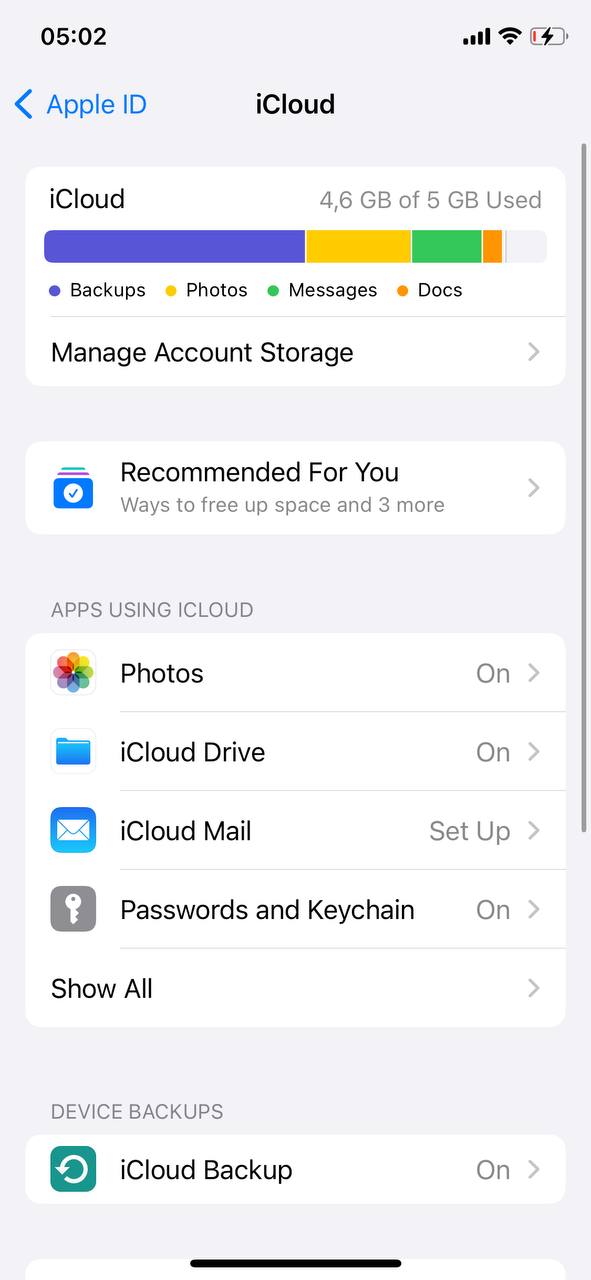
- Go to Photos.
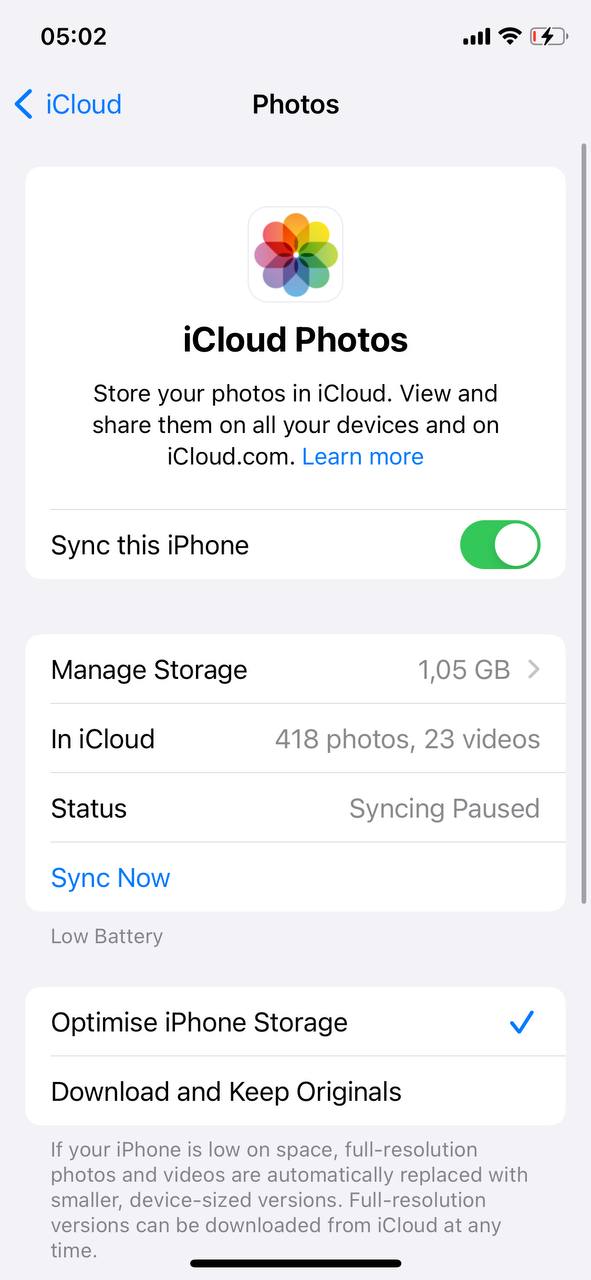
- Switch off the iCloud Photos option. This action helps to prevent automatic uploads and syncing of photos, reducing the chance of duplicates.
Method 2: Review Live Photos Settings
Adjusting the settings for Live Photos can help prevent unnecessary duplicates by controlling when these motion-enhanced photos are taken:
- Launch the Camera app on your iPhone.
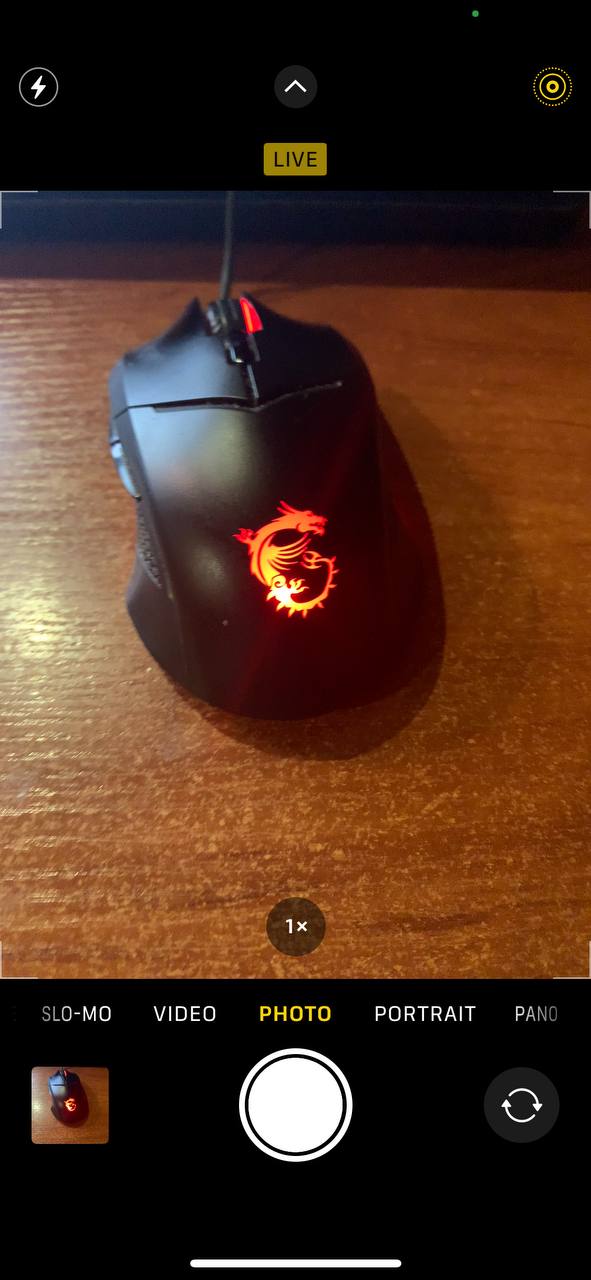
- Find the Live Photos icon, which resembles concentric circles, at the top of the screen. Tap this icon to toggle Live Photos off, or select ‘Auto’ to allow your iPhone to decide when to use Live Photos based on movement detection.
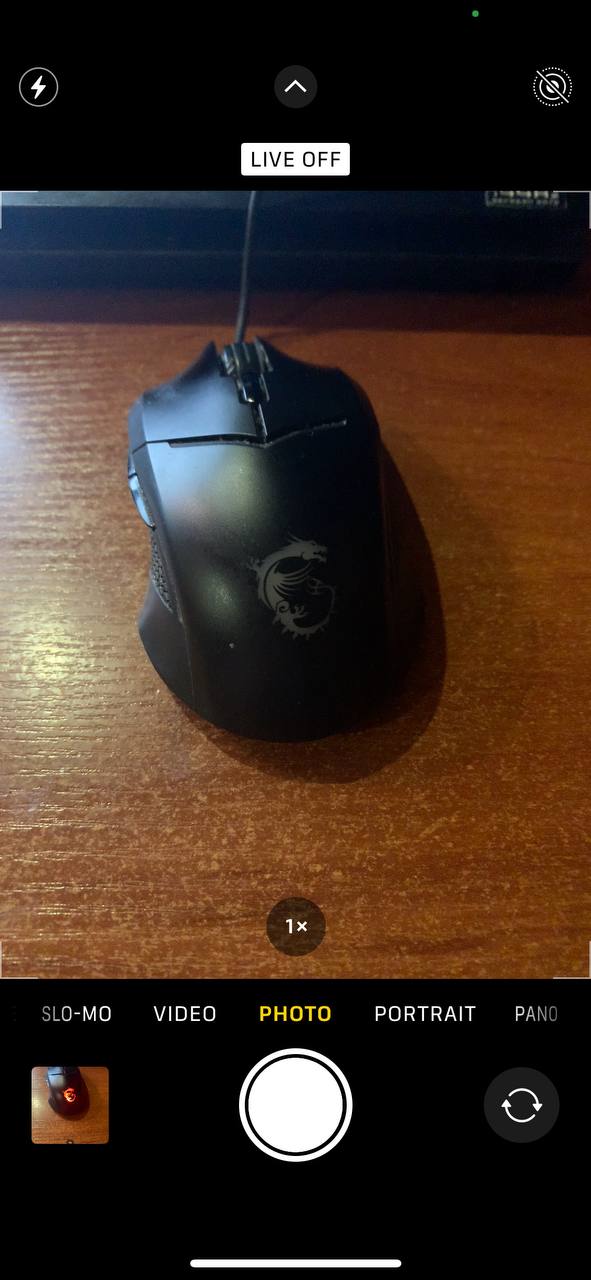
- Disabling Live Photos or setting them to ‘Auto’ can significantly reduce the number of similar photos stored in your library, conserving space and keeping your album organized.
Method 3: Avoid Burst Mode Spam
While Burst mode is great for capturing action shots, it can quickly fill your library with similar images. To manage this:
- Use Burst mode selectively for fast-moving scenes where capturing the perfect moment is crucial.
- After taking Burst photos, review them by tapping ‘Select’ and keep only the best shots. This helps to eliminate duplicates and conserve storage space.
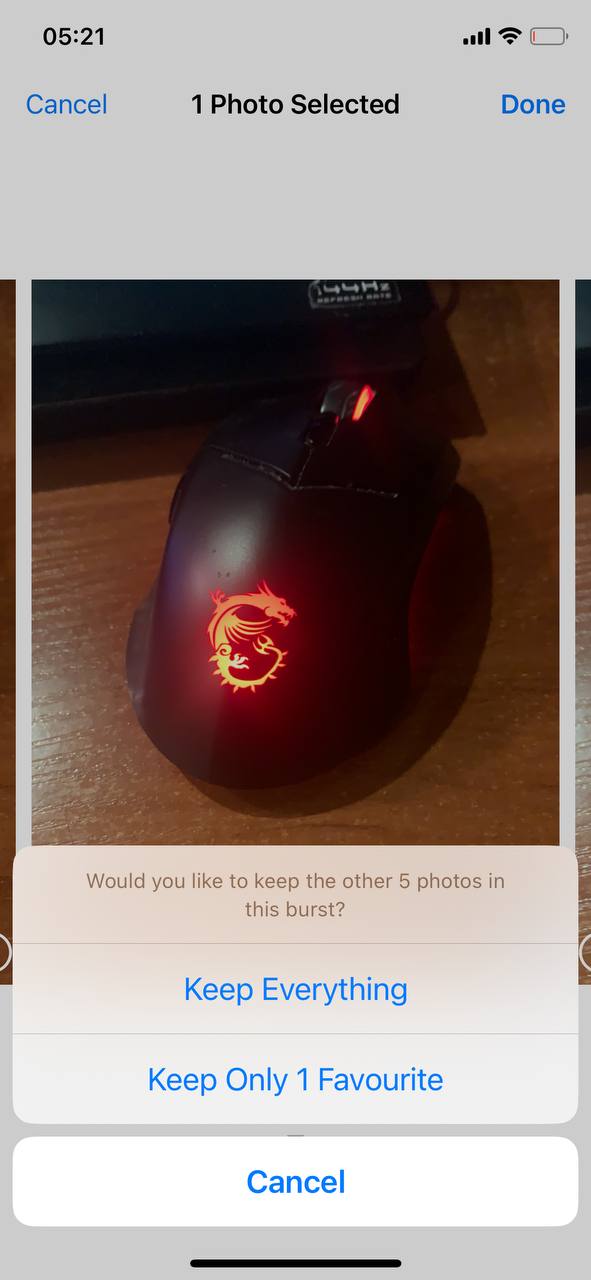
Method 4: Choose One Cloud Service
can prevent sync conflicts and duplications. Whether it’s iCloud or Google Photos, consistency is key.
Using multiple cloud services for photo storage can lead to sync conflicts and duplicates. To avoid this stick to a single service for photo storage:
- Decide on a primary cloud service, such as iCloud or Google Photos, based on your preferences and ecosystem.
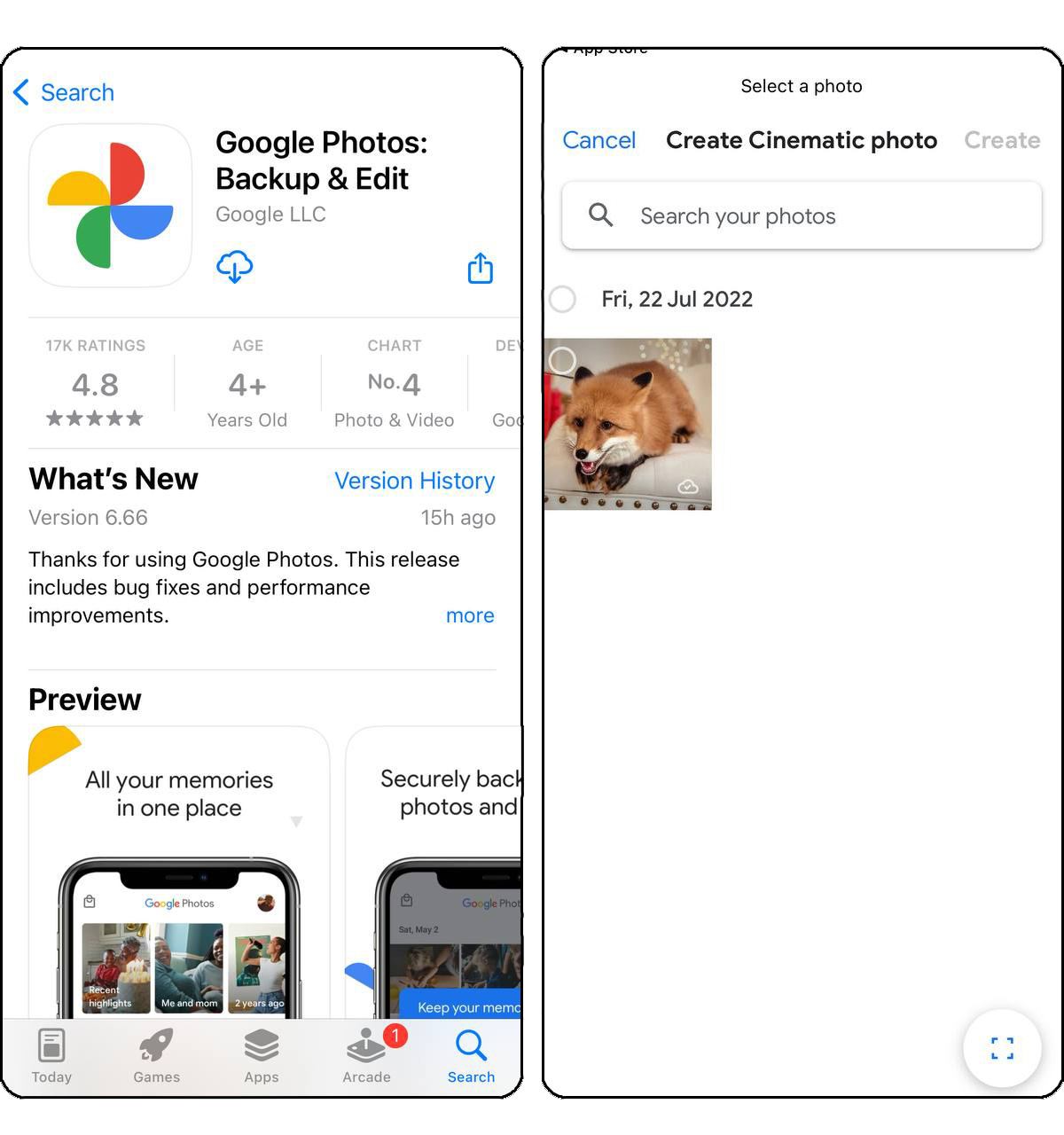
- Ensure all your devices upload to this chosen service to maintain consistency and avoid duplicate uploads from different services.
Method 5: Turn Off Auto HDR
Auto HDR combines several exposures to create the best shot, but it can also save duplicates. Disable Auto HDR in the Camera settings if you find it unnecessary. To turn it off:
- Go to Settings and select Camera.
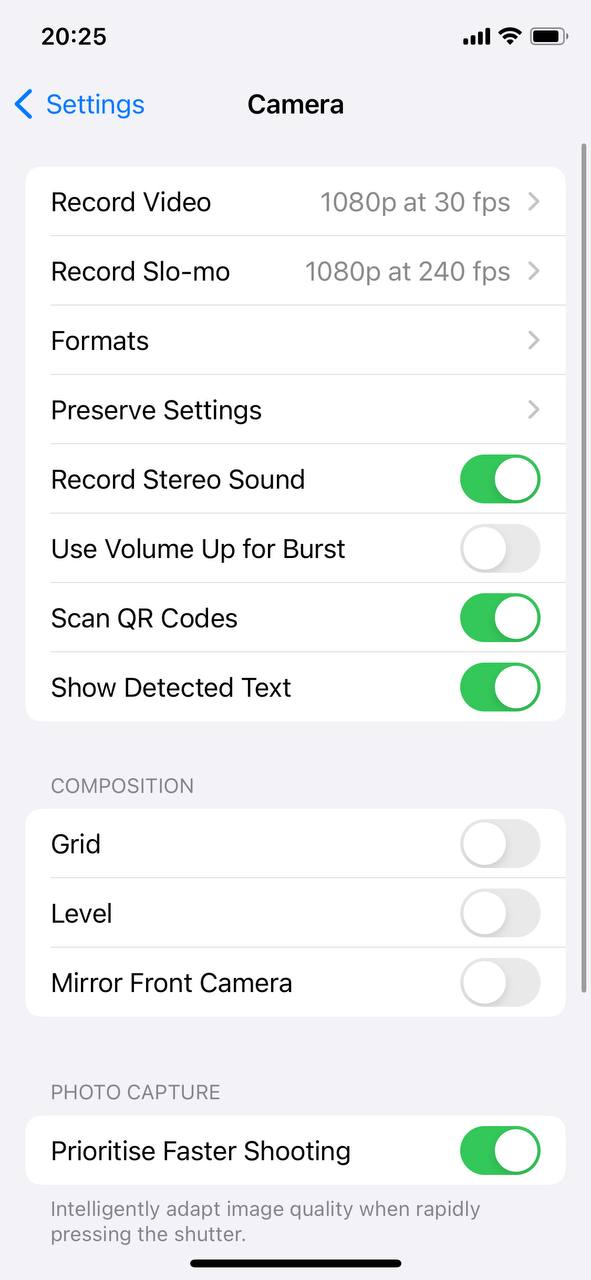
- Toggle off the Auto(Smart) HDR option. This will prevent your iPhone from saving both the HDR and non-HDR versions of a photo, reducing the number of similar images in your library.
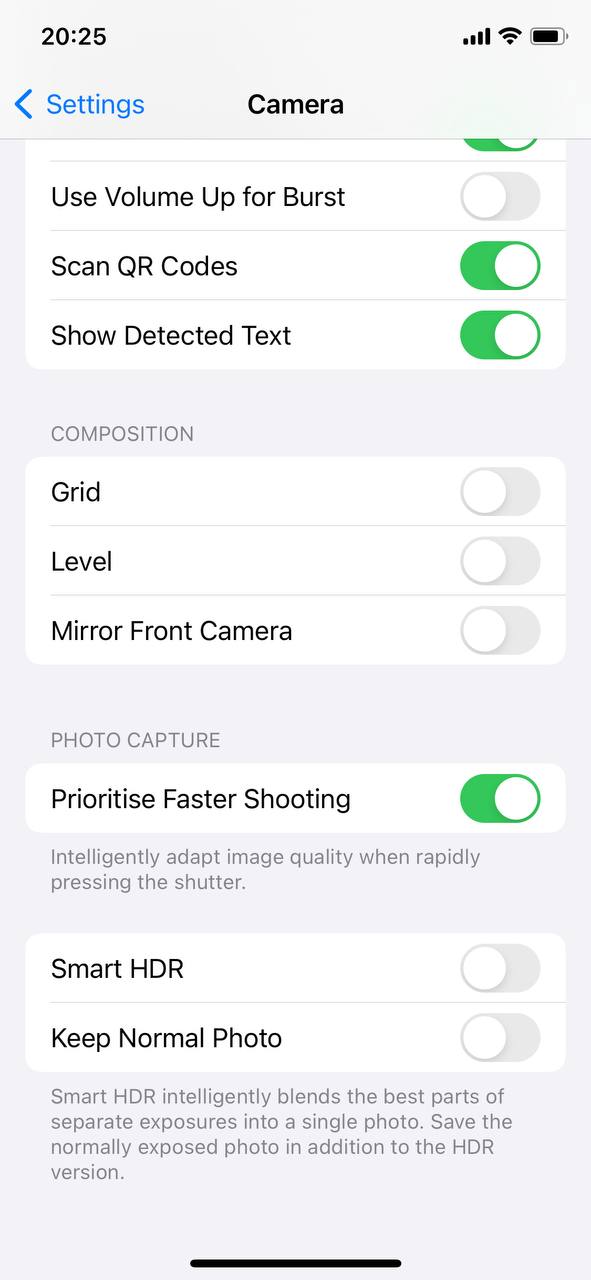
Method 6: Organize Downloaded Photos
Creating designated albums for downloaded photos can help you keep track of them and avoid duplicates:
- Open the Photos app and tap on the “Albums” tab at the bottom.
- Select the “+” icon in the top left corner to create a new album and give it a relevant name, such as “Downloads.”
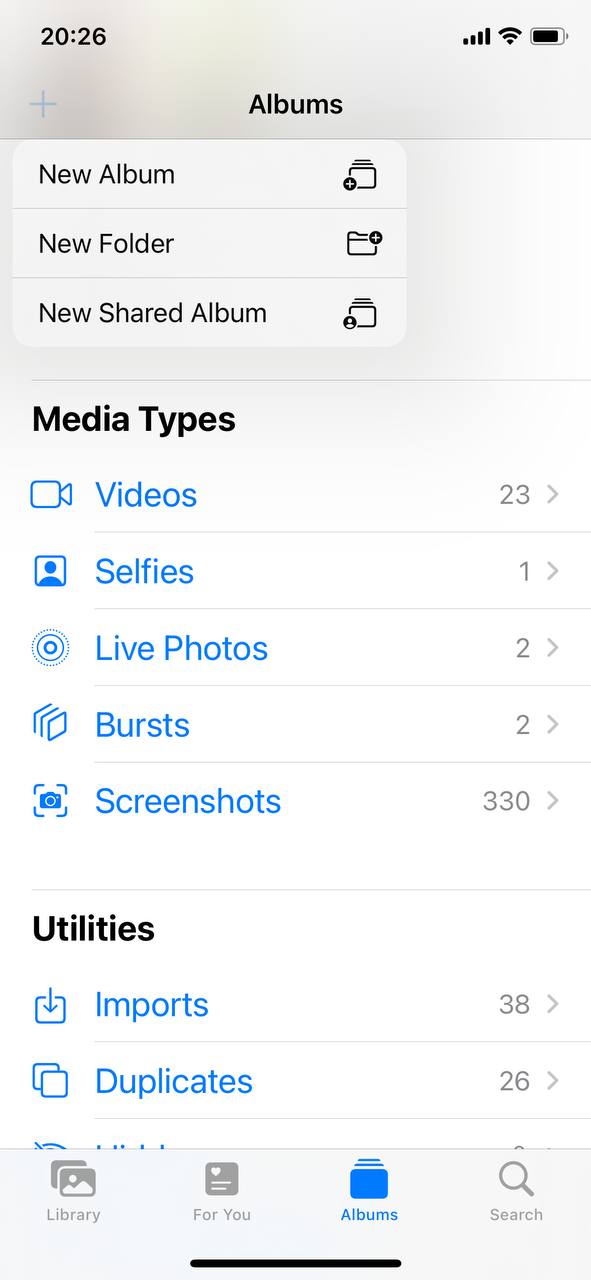
- Move your downloaded photos to this album by selecting them from your library and adding them to the album. This helps segregate downloaded content from your camera roll and other albums, making it easier to review and manage.
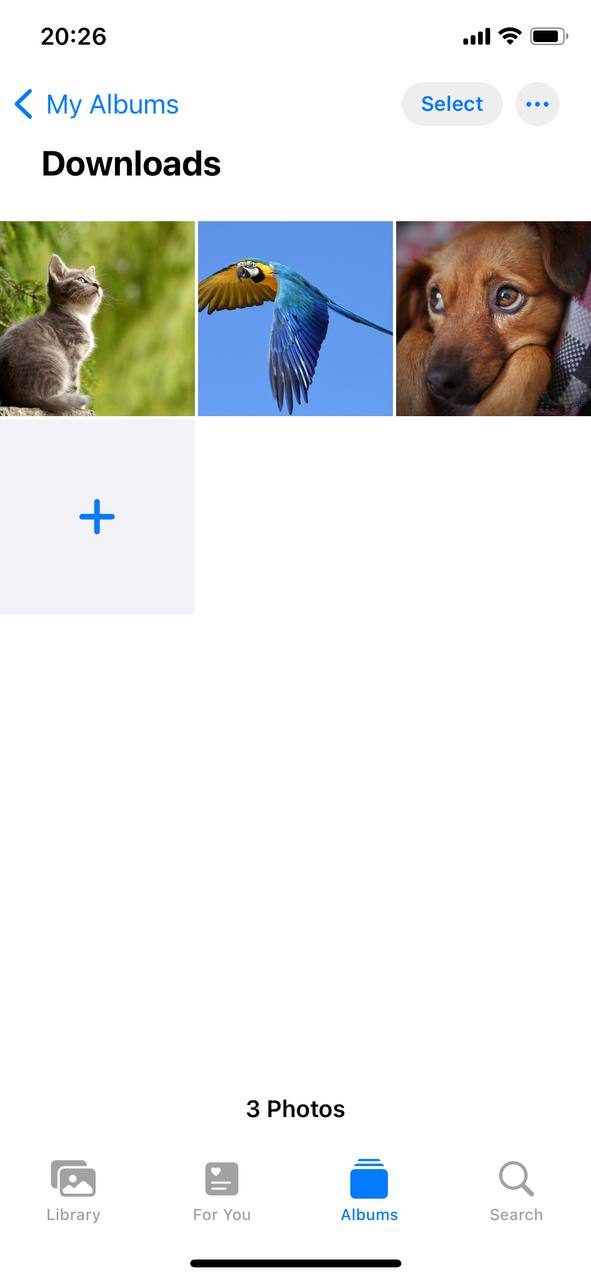
Method 7: Manually Backup Photos
Manual photo backups can help prevent duplicates from appearing by establishing a singular, well-organized repository for your images. This method involves selectively transferring photos to a computer or cloud service, thereby enabling a thorough review and organization process.
- Determine whether to use manual transfer or a third-party application for your backup needs.
- Depending on the chosen method link your iPhone to your computer using a USB cable, or ensure a stable wifi connection.
- Follow the instructions specific to your chosen backup method to commence the photo transfer from your iPhone to the selected backup destination.
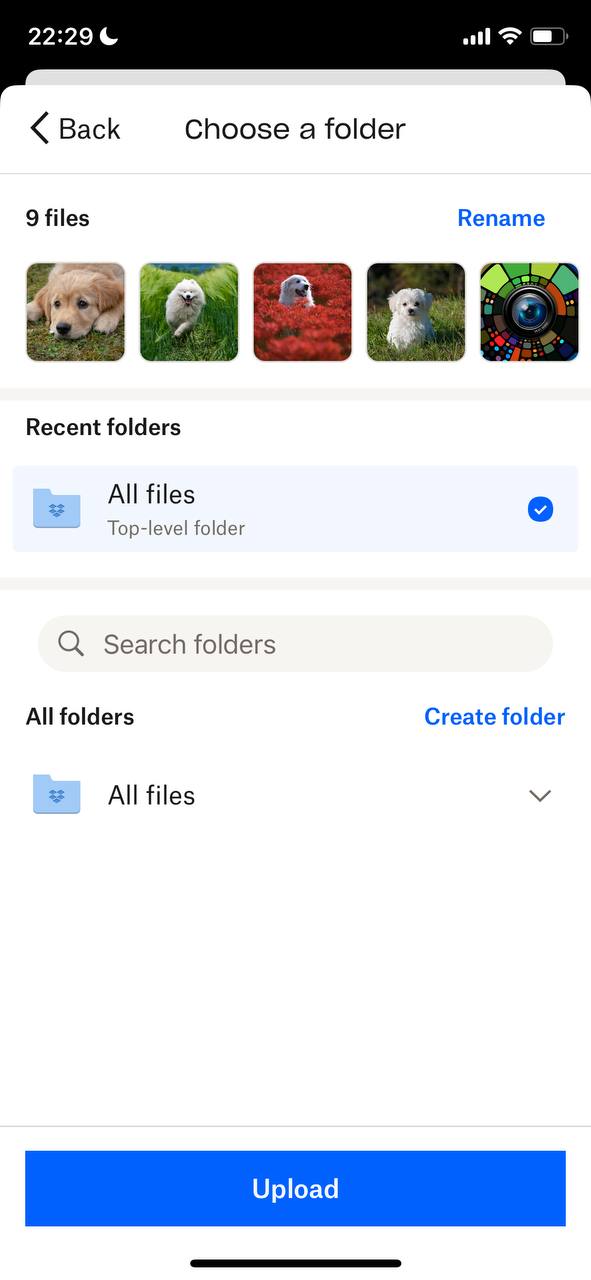
- During the backup process, take the opportunity to organize your photos and eliminate duplicates, ensuring that only unique photos are preserved in the backup.
By implementing these simple activities into your routine, you can reduce the chance of duplicate photos appearing on your iPhone, or even prevent duplicate photos on your iPhone completely, which in turn will provide you with more organized and pleasing to the eye photo library.
How To Remove Existing Duplicates
Once you’ve identified duplicate photos in your library, the next step is deciding on the best method to remove them. Whether you prefer the convenience of built-in iOS features, the advanced capabilities of third-party apps, or the personalized control of manual review, various options are available to clean up your photo collection. Let’s explore these methods in detail:
Use Built-in “Duplicates” Album
The introduction of the “Duplicates” album in iOS 16 simplifies the process of managing duplicate photos. This feature automatically identifies and groups similar images, allowing you to easily review and delete them:
- Begin by opening the Photos app on your iPhone.
- Navigate to the Albums tab and scroll to locate the Duplicates album. This album is specifically designed to house identified duplicate photos.
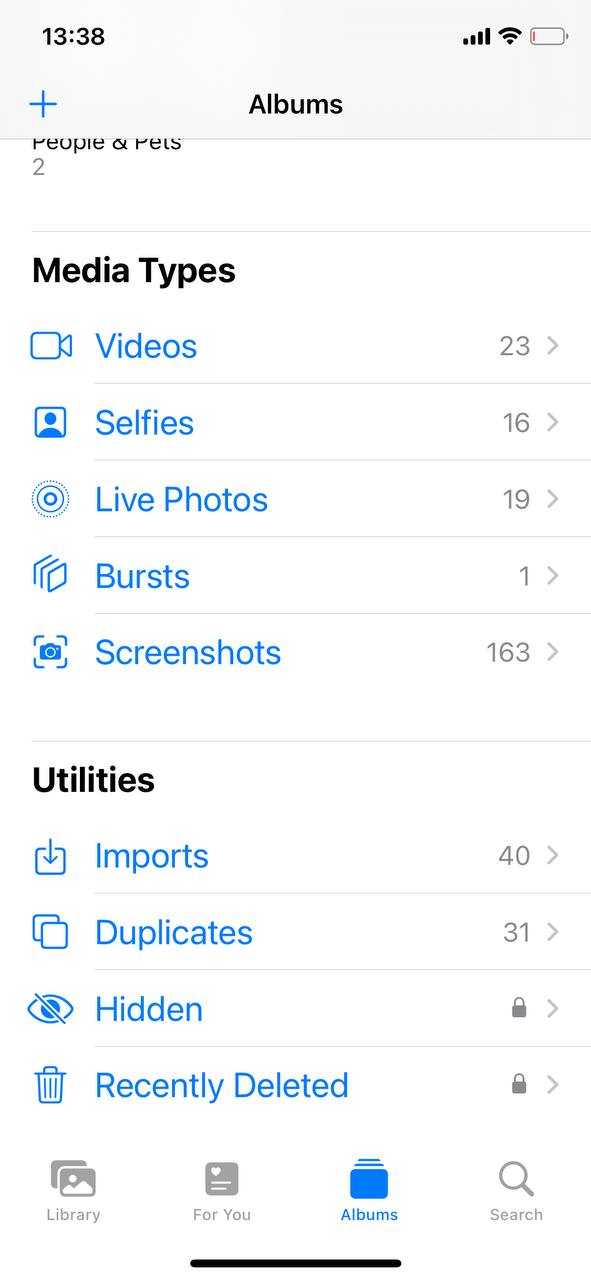
- Within the album, you’ll see your duplicate photos grouped together. For each set of duplicates, you can choose to either merge them into a single photo, preserving the highest quality version, or delete the duplicates you don’t need.
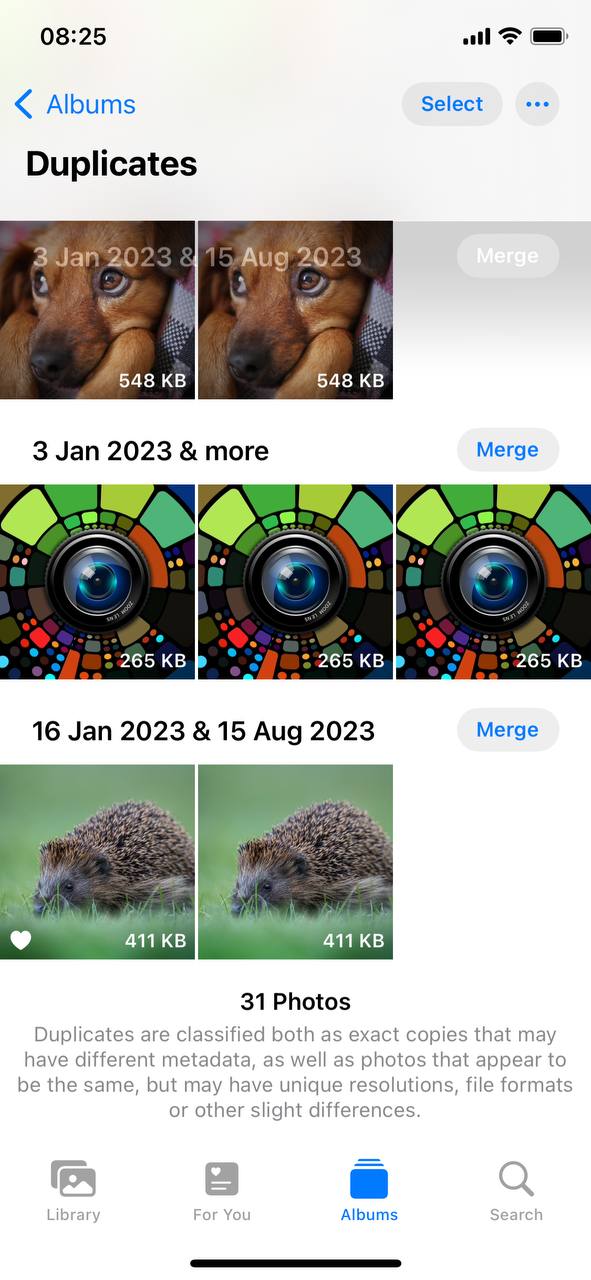 Tapping on ‘Merge’ or ‘Delete’ will prompt a confirmation. Confirming this action will either merge the duplicates, thereby saving space, or remove them entirely from your library.
Tapping on ‘Merge’ or ‘Delete’ will prompt a confirmation. Confirming this action will either merge the duplicates, thereby saving space, or remove them entirely from your library.
This built-in tool helps in decluttering your photo library while also ensures that you retain the best version of your images without the redundancy of duplicates.
While this built-in feature is helpful for quick cleanups, its limitations may necessitate more thorough methods for those with extensive libraries or numerous similar photos. In such cases, third-party apps or manual review might offer the better solution.
Utilize Third-Party Duplicate Cleaner Apps
When the built-in “Duplicates” album doesn’t meet all your needs, third-party apps can provide a more thorough solution. These apps are designed to identify and remove not only exact duplicates but also similar photos, offering a range of options for cleaning up your photo library:
- Gemini Photos: Gemini goes beyond simple duplicate detection by also identifying similar-looking photos, allowing you to choose the best one to keep. It also suggests deleting blurry images and screenshots, helping to declutter your library not just by removing exact duplicates but by curating your photo collection for quality.
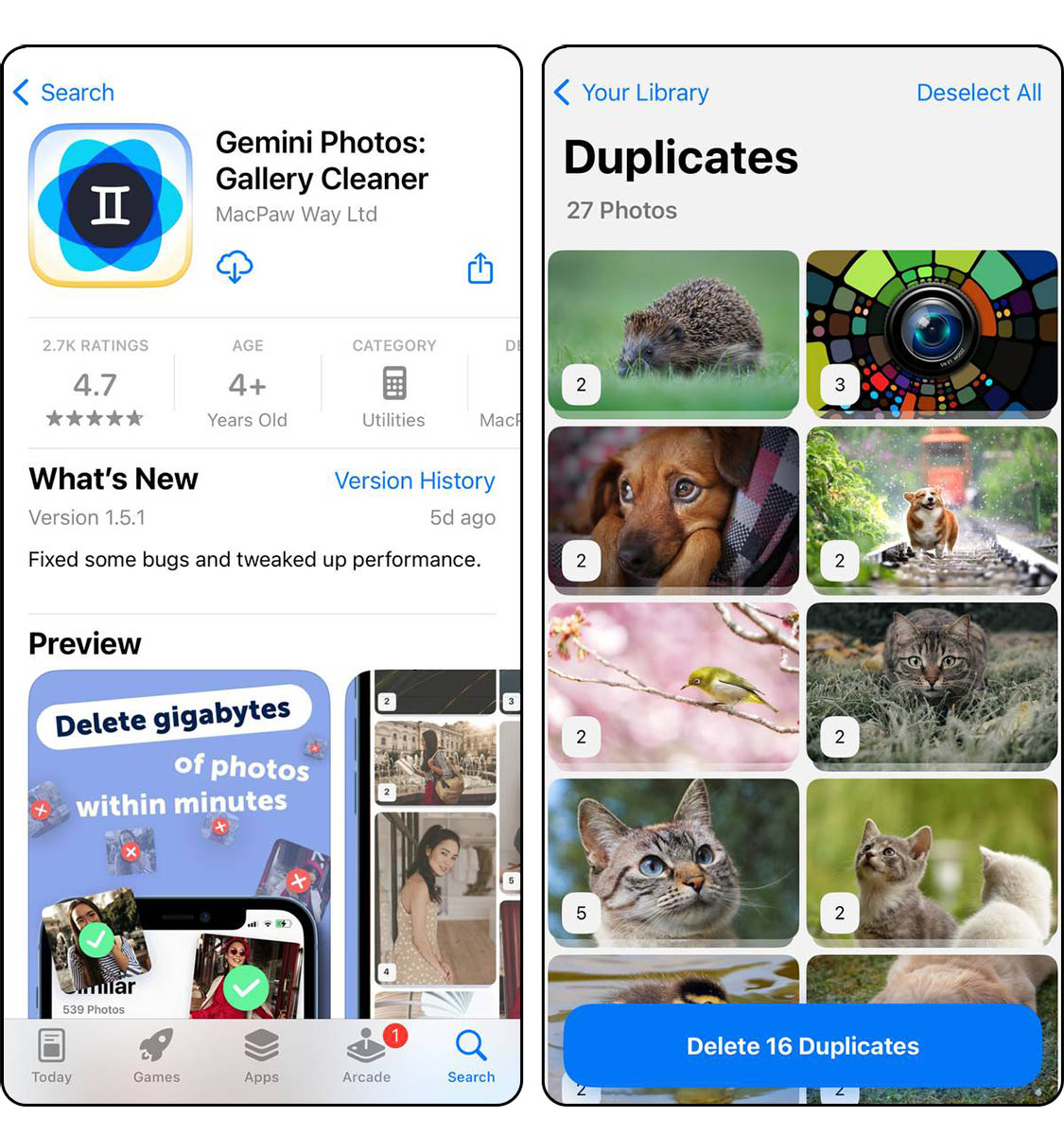
- Remo Duplicate Photos Remover: Remo stands out with its precise detection algorithms, capable of finding duplicates and similar photos with subtle variations. This app is particularly useful for users who have multiple versions of a photo due to editing or filtering, as it helps identify and group these variations for easy review and deletion.

- Cleaner – Clean Up Storage: This app offers a full cleaning experience by extending its features beyond photos to videos, contacts, and more. Its photo cleaning feature is user-friendly, providing a quick and effective way to identify duplicates and similar photos, which is ideal for users looking for an all-in-one cleanup tool for their iPhone.
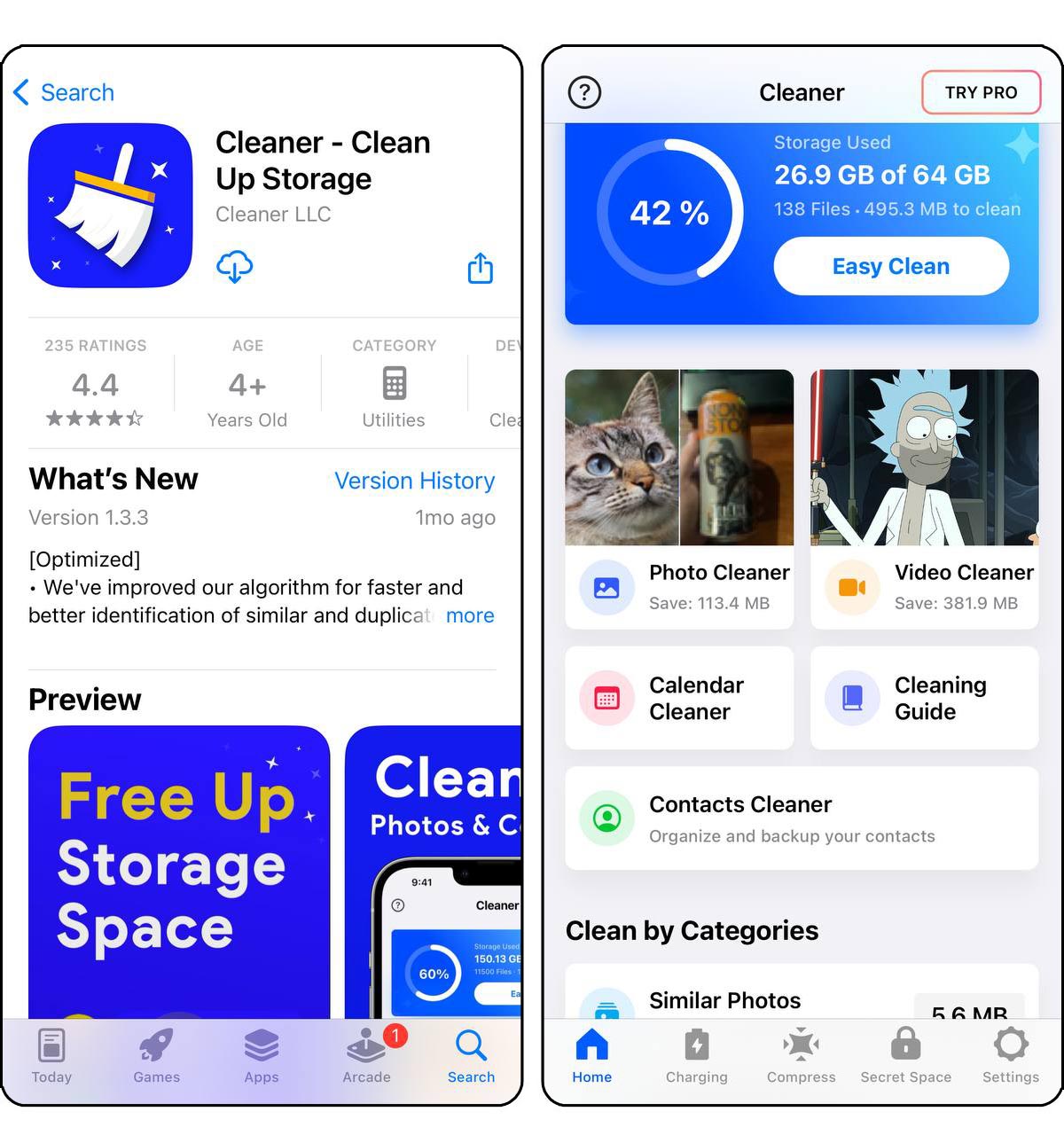
Each app brings its own strengths to the table, from Gemini’s quality-focused curation to Remo’s detailed variation detection and Cleaner’s all-around cleanup capabilities. Choosing the right app depends on your specific needs for managing your photo library.
Manual Review
For ultimate control, manually scanning your Photos library can be the most thorough way to identify and remove duplicates:
- Set aside time to go through your Photos app, focusing on albums where duplicates are likely to occur, such as ‘All Photos,’ ‘Screenshots,’ and ‘Bursts.’
- Look for obvious duplicates, similar photos from burst shoots, edited variations, and near-identical shots taken in quick succession.
- Compare photos closely to decide which to keep based on factors like composition, focus, and emotional value. Deleting the extras can significantly reduce clutter.
- Consider organizing kept photos into albums or using the ‘Favorites’ feature to highlight those of particular importance or quality, making them easier to access in the future.
This method ensures that every photo you keep has a purpose or meaning. While it can be time-consuming, the result is a highly curated and personalized photo collection.
Conclusion
In conclusion, managing duplicate photos on your iPhone involves a combination of proactive measures and cleanup methods. But if you understand the root causes of duplication and implement the tips described in this article, you can significantly reduce the occurrence of duplicates. Whether you choose to adjust your settings, use third-party apps, or manually curate your photos, each method offers a pathway to a more organized and space-efficient photo library. Remember, a well-managed photo collection saves storage space and improves your overall iPhone experience, making it easier to enjoy and share your memories.













 Tapping on ‘Merge’ or ‘Delete’ will prompt a confirmation. Confirming this action will either merge the duplicates, thereby saving space, or remove them entirely from your library.
Tapping on ‘Merge’ or ‘Delete’ will prompt a confirmation. Confirming this action will either merge the duplicates, thereby saving space, or remove them entirely from your library.

